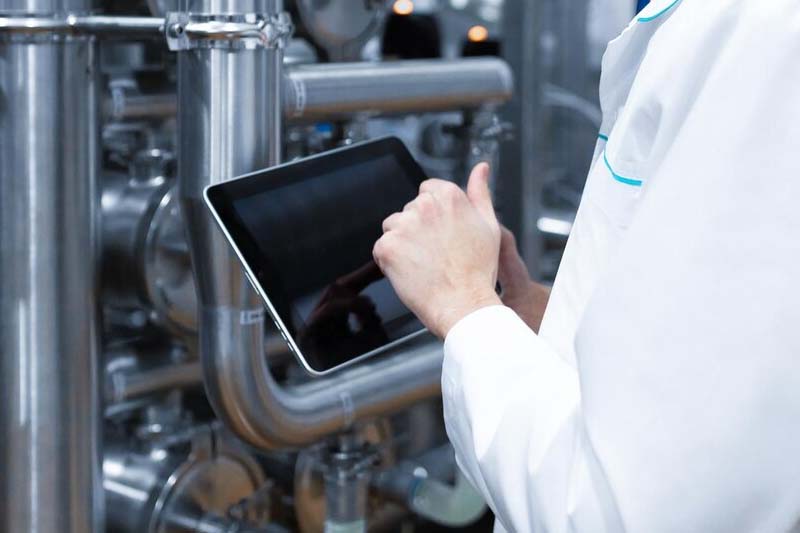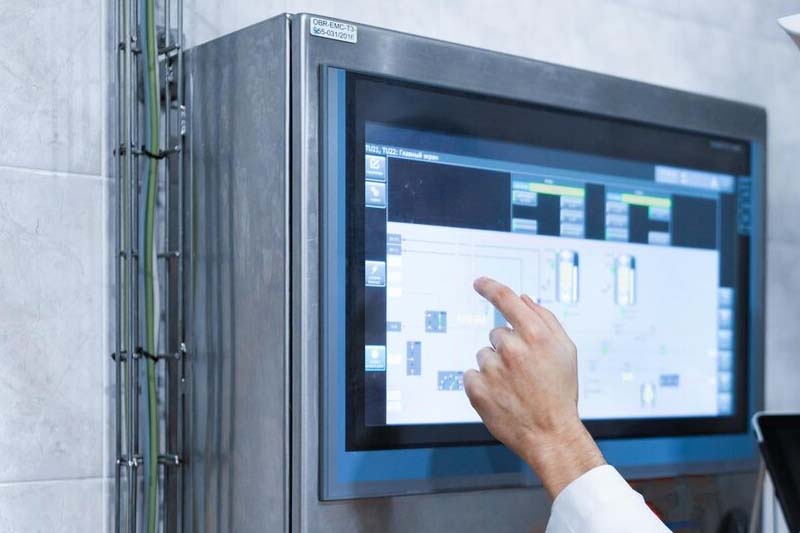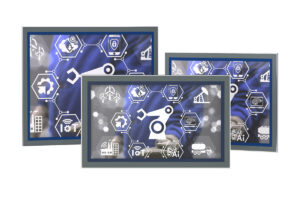Industrial PC panel stand at the forefront of modern manufacturing, playing a pivotal role in streamlining operations and enhancing efficiency. These panels serve as the nerve center of industrial automation, seamlessly integrating with various processes to ensure a smooth workflow. The integration of touchscreen technology marks a significant leap forward in the realm of industrial control systems. By eschewing traditional control interfaces, these panels empower operators with an intuitive and interactive means of overseeing complex processes.
Introduction
In industrial settings, where precision and real-time decision-making are paramount, the adoption of touchscreen technology becomes more than just a convenience—it becomes a strategic necessity. The tactile engagement offered by touchscreen interfaces reduces the learning curve for operators and expedites their ability to navigate through intricate control systems. This shift from conventional control mechanisms to touch-based interfaces heralds a new era in human-machine interaction, bringing about unparalleled convenience and responsiveness in industrial environments.

Evolution of Touchscreen Technology
Touchscreen technology has a storied history, starting in the mid-20th century with resistive touchscreens. These relied on pressure-sensitive overlays. The game-changer came with capacitive touchscreens, which use the body’s electrical conductivity for touch detection, boosting responsiveness. Projected Capacitive (PCAP) technology brought multi-touch capabilities, becoming a standard across industries, including industrial settings.
Recent advancements include infrared touchscreens, detecting touch through infrared light, and acoustic wave touchscreens, using ultrasonic waves for input. These technologies cater to specific industrial needs, showcasing the ongoing evolution of touchscreen interfaces. As user demands and technology interact, the future promises even more sophisticated solutions for diverse applications.
Key Features of Industrial PC Panel Touchscreens
Industrial PC panel touchscreens boast essential features that set them apart in demanding industrial environments. These features not only enhance user experience but also contribute to the seamless functioning of critical operations.
High-resolution Displays
Industrial PC panels are equipped with high-resolution displays, ensuring clarity and precision in data visualization. The crisp and vibrant screens facilitate a comprehensive view of complex processes, aiding operators in making informed decisions.
Multi-touch Capabilities
The incorporation of multi-touch technology allows operators to interact with the interface using multiple fingers simultaneously. This intuitive functionality enhances the speed and efficiency of navigation, crucial for managing intricate control systems.
Resistive vs. Capacitive Touchscreens
The choice between resistive and capacitive touchscreens provides flexibility based on specific industrial needs. Resistive touchscreens respond to pressure, making them suitable for various industrial environments. On the other hand, capacitive touchscreens, relying on electrical conductivity, offer enhanced responsiveness and are well-suited for applications where precision is paramount.
Durability and Ruggedness for Industrial Environments
Recognizing the challenging conditions of industrial settings, Industrial Box PCs with touchscreen interfaces are specifically engineered for durability and ruggedness. They are meticulously designed to withstand harsh environmental factors such as extreme temperatures, moisture, and physical impacts. This robust construction ensures the longevity of the equipment in demanding industrial contexts.
In summary, the high-resolution displays, multi-touch capabilities, and the choice between resistive and capacitive touchscreen technologies in Industrial Box PC touchscreens collectively contribute to creating a reliable and efficient interface for managing and controlling complex processes in industrial settings.

Applications in Industrial Settings
In industrial settings, the applications of touchscreen technology in PC panels extend across various critical functions, revolutionizing the way operations are managed and monitored.
Control Systems and Automation
Touchscreen-equipped industrial PC panels play a pivotal role in control systems and automation. The intuitive interface allows operators to interact seamlessly with the control systems, enabling real-time adjustments and precise control over machinery and processes. This enhances overall operational efficiency and responsiveness, crucial for industries relying on automation for production.
Human-Machine Interface (HMI) in Manufacturing
The integration of touchscreen technology transforms industrial PC panels into sophisticated Human-Machine Interface (HMI) devices. This facilitates a direct and user-friendly interaction between operators and machines on the manufacturing floor. With touch-enabled controls, operators can easily navigate through complex processes, input commands, and monitor production parameters, contributing to streamlined manufacturing operations.

Monitoring and Data Visualization
Industrial PC panels with touchscreen interfaces excel in monitoring and data visualization tasks. The high-resolution displays provide a comprehensive view of operational data, allowing operators to track performance metrics, detect anomalies, and make data-driven decisions. Touchscreen capabilities enable zooming, panning, and interacting with charts and graphs, providing a more dynamic and efficient way to comprehend complex data sets in real-time.
In summary, the applications of touchscreen technology in industrial PC panels extend from precise control in automation to enhancing the human-machine interface in manufacturing and facilitating effective monitoring and data visualization. These applications collectively contribute to optimizing industrial processes, improving productivity, and ensuring a more responsive and adaptable manufacturing environment.
Conclusion
In conclusion, the integration of touchscreen features in industrial PC panels marks a transformative shift in industrial automation. These features, encompassing high-resolution displays, multi-touch capabilities, and rugged designs, are pivotal in enhancing operational efficiency and reshaping human-machine interaction.
Recapping the importance of touchscreen features, we observe their role in streamlining processes, improving decision-making, and boosting overall productivity in industrial settings. The versatility of resistive and capacitive touchscreens ensures adaptability to diverse industrial needs, making them a cornerstone in modern industrial PC panel design.
Looking forward, the future of industrial touchscreen technology holds exciting possibilities. Anticipated developments include increased responsiveness, integration with emerging technologies like augmented reality, and enhanced durability to withstand harsh industrial environments. This ongoing evolution reflects a commitment to creating smarter and more efficient industrial processes, paving the way for a new era of responsive and adaptive manufacturing environments.